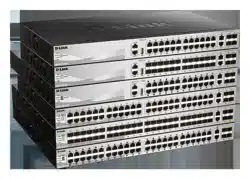Loading ...
Loading ...
Loading ...

DGS-3130 Series Layer 3 Stackable Managed Switch Web UI Reference Guide
222
To view the following window, click L3 Features > OSPF > OSPFv3 > OSPFv3 Passive Interface Settings, as
shown below:
Figure 6-56 OSPFv3 Passive Interface Settings Window
The fields that can be configured are described below:
Parameter Description
Interface Name Enter the passive interface name here. This name can be up to 12 characters
long.
Select the Default option specify all the interfaces as passive interfaces.
Click the Apply button to accept the changes made.
Click the Delete button to delete the specified entry.
Enter a page number and click the Go button to navigate to a specific page when multiple pages exist.
OSPFv3 Area Settings
This window is used to display and configure the OSPFv3 area settings.
To view the following window, click L3 Features > OSPF > OSPFv3 > OSPFv3 Area Settings, as shown below:
Figure 6-57 OSPFv3 Area Settings Window
The fields that can be configured in OSPFv3 Area Settings are described below:
Parameter Description
OSPF Area ID
Enter the OSPF area ID used here. It can be specified as an IPv4 address or in
the decimal value format. The decimal range is from 0 to 4294967295.
Range Select this option to consolidate and summarize routes at an area boundary.
This feature is used only with ABRs. It is used to consolidate or summarize
routes for an area. The result is that a single summary route is advertised to
other areas by the ABR. Routing information is condensed at area boundaries.
External to the area, a single route is advertised for each address range.
Loading ...
Loading ...
Loading ...
